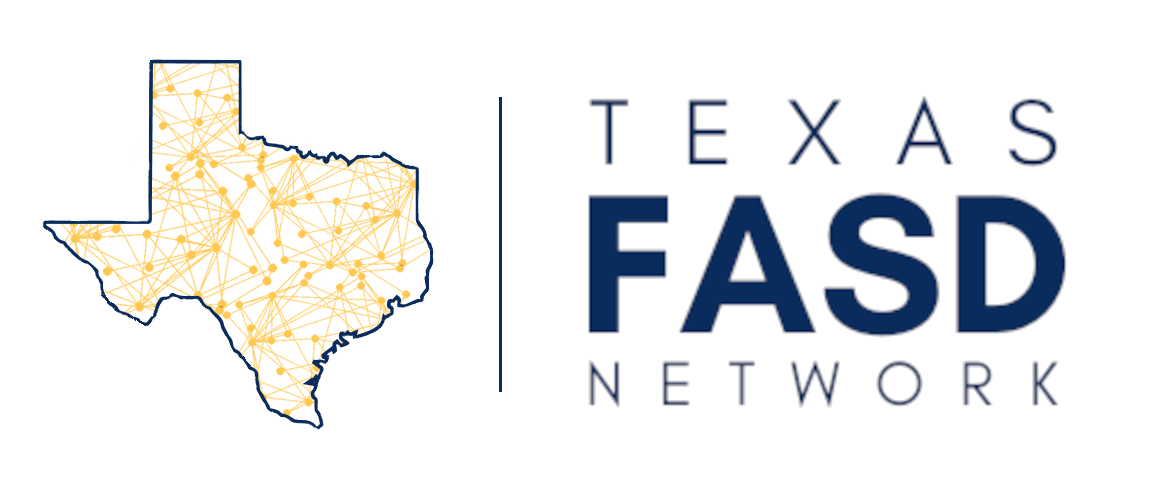
If you have concerns about prenatal alcohol exposure, please know you are not alone. We are here to help.
Fetal Alcohol Spectrum Disorders (FASD) is the umbrella term describing a group of neurodevelopmental differences caused by alcohol exposure before birth. Prenatal alcohol exposure can result in life-long differences and disorders in physical, intellectual, emotional, and behavioral development.
The CDC estimates 1 in 20 individuals have an FASD in the United States. FASD is one of the most common neurodevelopmental disorders and a leading known cause of intellectual disability and birth defects.
Every person with FASD is unique with various strengths and needs. The primary characteristics of individuals with FASD include:
- Learning differences
- Social communication differences
- Sensory processing differences
- Self-regulation challenges, including impulsivity
- Challenges with memory
- Difficulties with abstract thinking, decision-making and executive functioning (planning, organizing, goal-setting, etc.).
- Mood or behavioral regulation
- Challenges with daily living skills
Diagnosis
Detecting and diagnosing FASD is difficult, as there is currently no standardized protocol in the United States. There is no one test that screens or confirms fetal alcohol spectrum disorders. Additionally without the confirmation of prenatal alcohol, symptoms of FASD can often look like other better known diagnosis, such as autism or ADHD. This results in significant misdiagnosis and under-diagnosis of FASD. Typically, a multidisciplinary team of healthcare and mental health provers are involved in making FASD diagnosis.

How is FASD a spectrum?
FASD has a wide range of characteristics, behaviors, and abilities present in individuals with prenatal alcohol exposure. Every person’s experience is different.
The impact of prenatal alcohol exposure varies due to many factors, including epigenetics (the interaction of one’s genes and the environment), maternal metabolism, and the timing, frequency, and amount of alcohol exposure while in utero. Prenatal alcohol exposure permanently changes the brain and results in lifelong challenges. Intelligence is not always impacted. However, early diagnosis and appropriate supports through the lifespan yield best outcomes.
FASD & Stigma
Fetal Alcohol Spectrum Disorders can also carry shame and stigma, which leads to misunderstanding, incorrect stereotypes, and inadequate care. We believe no person drinks to hurt their baby. While it is true FASD does not happen without prenatal alcohol exposure, one cannot overlook the systemic inequities and barriers to maternal healthcare and family support. FASD happens across all races, cultures, and classes. FASD is a public health issue and it impacts families and communities worldwide.
There is hope.
Texas FASD Network is a community of individuals living with FASD, caregivers, researchers, healthcare providers, teachers, and community members that come together to ensure FASD is recognized, accepted, and included. We understand the frustration and despair that comes from barriers in our society. Our organization was founded on the principle that there is hope. We have seen positive changes being made in our systems of care and we commit to continuing the fight for dignity and inclusion.
FASD Resources
Pregnancy Alcohol Use and FASD Statistics in the United States
In 2022, CDC researchers found nearly 14% of pregnant people reported current drinking. Another 5% reported binge drinking (more than 3 drinks at a time) within the last 30 days.
Researchers at Yale estimate that up to 54% of pregnancies resulting in live births were exposed to at least 1 alcoholic beverage during gestation. Up to 13% are exposed to 5 or more drinks in one week.
It is estimated FASD costs the United States alone more than $4 billion annually.
What are the types of Fetal Alcohol Spectrum Disorders?
There are several diagnoses included under the FASD umbrella, all with different diagnostic criteria. Physicians, therapists, and mental health providers may use one of these classifications to describe the effects of prenatal alcohol exposure:
Fetal Alcohol Syndrome (FAS)
FAS is estimated to occur in 0.5 to 2 births out of every 1,000 in the United States. FAS can result in birth defects, other co-occurring neurodevelopmental disorders, and a wide range of presentation including:
- Problems with hearts, kidneys, and bones
- Differences in facial features
- Learning disabilities and low IQ
- Memory and coordination difficulties
- Hyperactivity and attention problems
Alcohol-Related Neurodevelopmental Disorder (ARND)
ARND is estimated to affect roughly 40,000 babies in the United States each year.
Individuals with ARND do not have physical differences or growth insufficiencies, but they do experience neurocognitive differences and behavioral issues into adulthood. Many individuals with ARND struggle to learn at the same pace as their peers. Most ARND cases involve:
- Intellectual disabilities
- Behavioral issues
- Learning difficulties
- Nerve abnormalities
Alcohol-Related Birth Defects (ARBD)
Infants born with alcohol-related birth defects will have visible symptoms of their disorder, such as differently formed or functioning:
- Heart
- Spine
- Kidneys
- Hearing abilities
- Bones
- Vision
It is possible for individuals with ARBD to also be included in other categories under the FASD umbrella. Many also experience the neurodevelopmental symptoms listed under ARND.
Neurobehavioral Disorder Associated with Prenatal Alcohol Exposure (ND-PAE)
Individual with this disorder have impaired neurocognitive abilities, as well as difficulties with self-regulation and adaptive functioning. There is usually strong evidence of prenatal alcohol exposure, and most symptoms manifest early in childhood. ND-PAE was first recognized in the Diagnostic and Statistical Manual (DSM 5) of the American Psychiatric Association (APA) in 2013.



